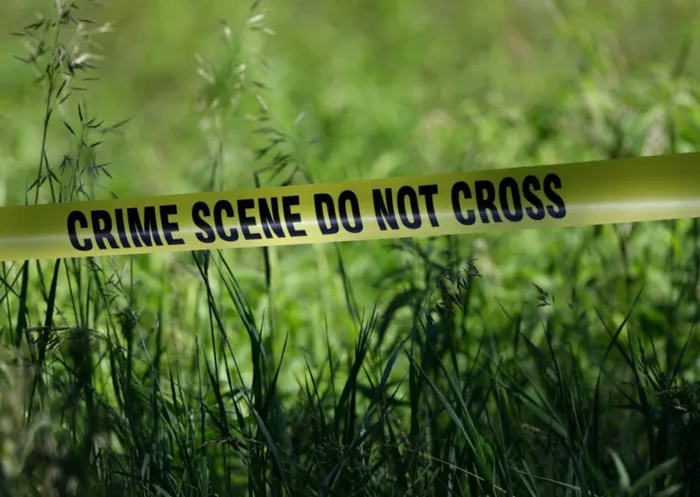
Spanish detectives are investigating a lawyer and her ex-husband over the suspected killing of their adopted Chinese-born, 12-year-old daughter. (AP Photo/Carlos Osorio) Spanish detectives are investigating a lawyer and her ex-husband over the suspected killing of their adopted Chinese-born, 12-year-old daughter. (AP Photo/Carlos Osorio)
Cape Town - Experts on policing have slammed the crime statistics released this week as “incorrect” and claimed the situation was even worse than the scenario depicted by Police Minister Nathi Mthethwa and national police commissioner General Riah Phiyega.
The Institute for Security Studies (ISS) on Friday said it had calculated:
* The murder rate did not increase by 0.6 percent as indicated by police on Thursday but was in fact up by as much as 2.8 percent;
* The sexual offences rate, which police said had dropped by 0.4 percent, actually rose by 1.5 percent;
* Business robberies, instead of dropping by 0.6 percent, increased by 1.3 percent.
The ISS was not alone in questioning the police’s number-crunching.
* The Women’s Legal Centre asked why the breakdown of sexual offences statistics did not include a breakdown of the victims (ie, women, men and children).
* Rape Crisis said the 0.4 percent drop in the rape ratios was not accurate, with research showing as few as one in 25 women reported rape. “If the police believe their own statistics, they and other agencies will continue to grossly underestimate the resources that are needed to fight this scourge,” the organisation said.
* Corruption Watch asked why corruption statistics were not specified. “While we understand that corruption is difficult to measure, it is a serious crime and widely perceived to be rapidly increasing,” the organisation’s executive director David Lewis said.
These organisations were responding to the data released on Thursday, which for the most part were bleak with several categories of violent crime – including murder, attempted murder and assault with intent to do grievous bodily harm – all showing increases for the first time in 10 years.
In the Western Cape, police admitted on Friday that there had been areas where they had dropped the ball, including curbing spaza shop robberies and gang violence.
Despite this, an upbeat Phiyega has dubbed the statistics “a story of assurance and confidence”.
But, on Friday, the ISS issued a statement questioning the population data used to work out the crime ratios that were utilised by police to present its statistics. Crime statistics are released as raw numbers and as ratios per 100 000 people. The crime statistics released last year used 2001 census data, while the current ones used 2011 data.
The ISS said that because the 2011 census found that the population growth had been higher than previously thought, the total population would have to be revised for each previous year to give accurate annual population figures. By comparing crime rates for 2011/12 and 2012/13 without updating the population estimated for 2011/12, the police were not comparing “apples with apples”.
But on Friday the police said the population change was taken into consideration to improve the analysis.
The police said in a statement: “Both the ratios and raw numbers (actual case numbers) were provided to the media and loaded on to our website, as has always been the case. The use of ratios is not intended to deliberately confuse matters or hide anything.”
The statement goes on to say that “all the mid-year population estimates from 2002 to 2011 were based on the 2001 census. The SAPS used the 2011 mid-year population estimates provided by Stats SA to calculate the crime ratios for 2011/2012. This is consistent with what we have been doing all along and it allows us to compare apples with apples when analysing the data.”
DA MP Dianne Kohler-Barnard said: “The figures presented do not present an accurate picture of crime in South Africa. The minister knew this, but chose to be selective.”
She said she would be calling for a parliamentary debate on the high crime levels and that the raw data should be used for accuracy
When he released the statistics on Thursday, Mthethwa said: “Crime ratio is an internationally accepted depiction of crime as raw figures may skew the true reflection on performance of those types of crime that directly affect the population, particularly contact crime.”
Phiyega said: “Views continue to be raised about the authenticity of crime statistics. SAPS are hard at work to ensure that we achieve a level of statistical reporting that optimally meets validity tests.”
She said the police would soon sign a memorandum of understanding with Stats SA that would help them “march convincingly towards optimum reporting levels”.
The annual crime statistics have also in recent years been called into question because of incidents of suspected manipulation.
In 2009, several Western Cape police stations were investigated for allegedly doctoring crime statistics. The station commander at Lansdowne police station was dismissed and the then Independent Complaints Directorate recommended disciplinary action at some others.
Also in 2009, an investigation was conducted into KwaZulu-Natal’s top performing police station, Mountain Rise. The ICD found statistics had been manipulated.
Weekend Argus
Stats help fight against crime: Popcru
Crime stats: 806 298 arrests for serious crimes
Crime stats: Sexual offences down
We have crime under control - SAPS
Crime stats: Murder rate increases
Crime stats ‘worst figures in 10 years’
Crime stats not reassuring: DA
Crime stats: Cops handled 12 399 protests
ISS wants crime stats every month
